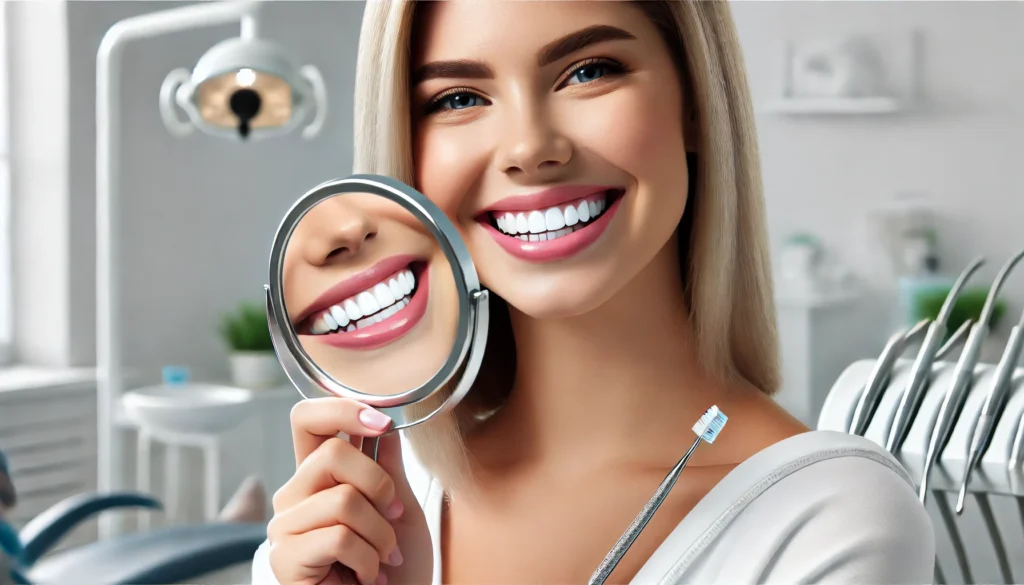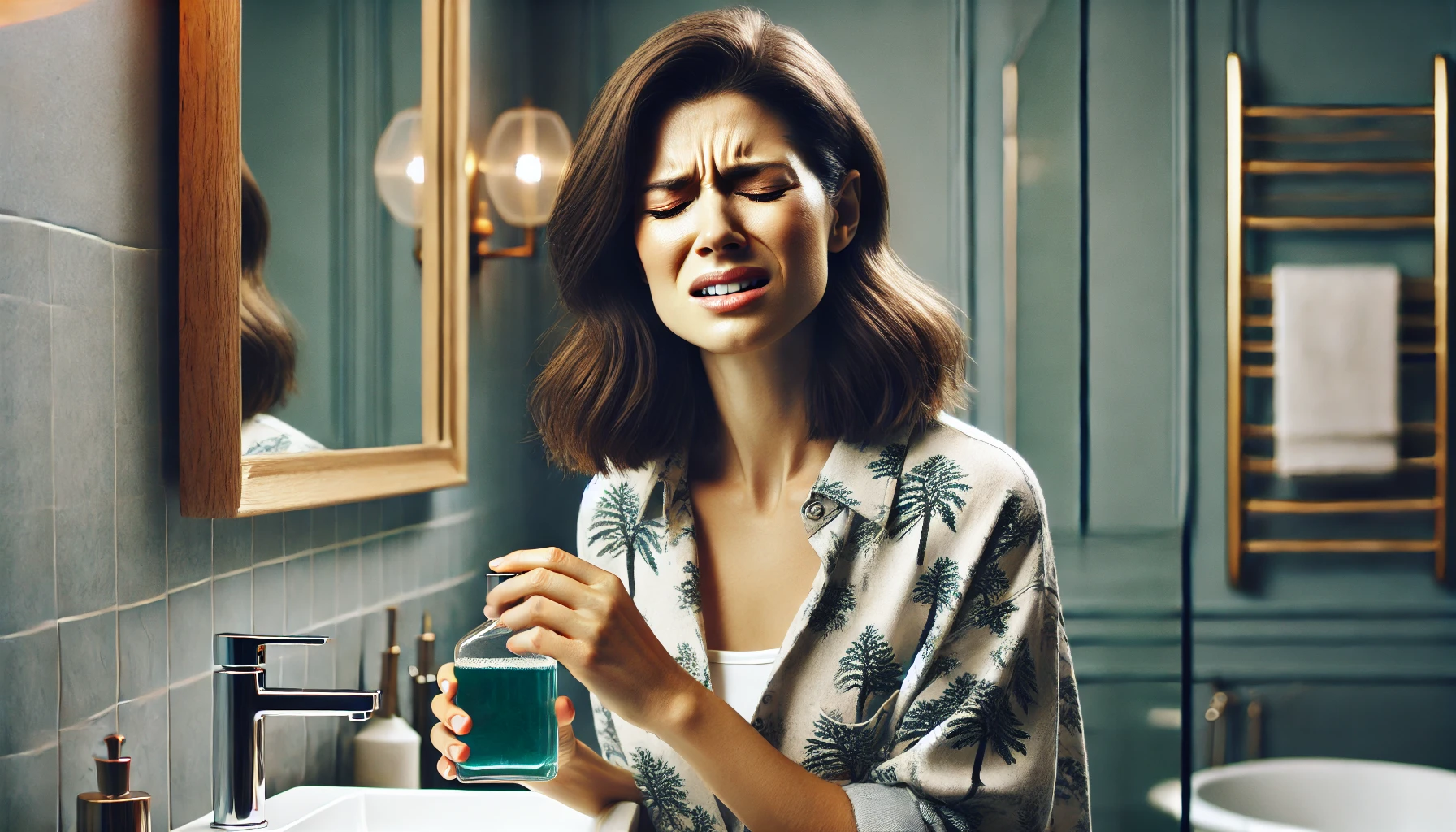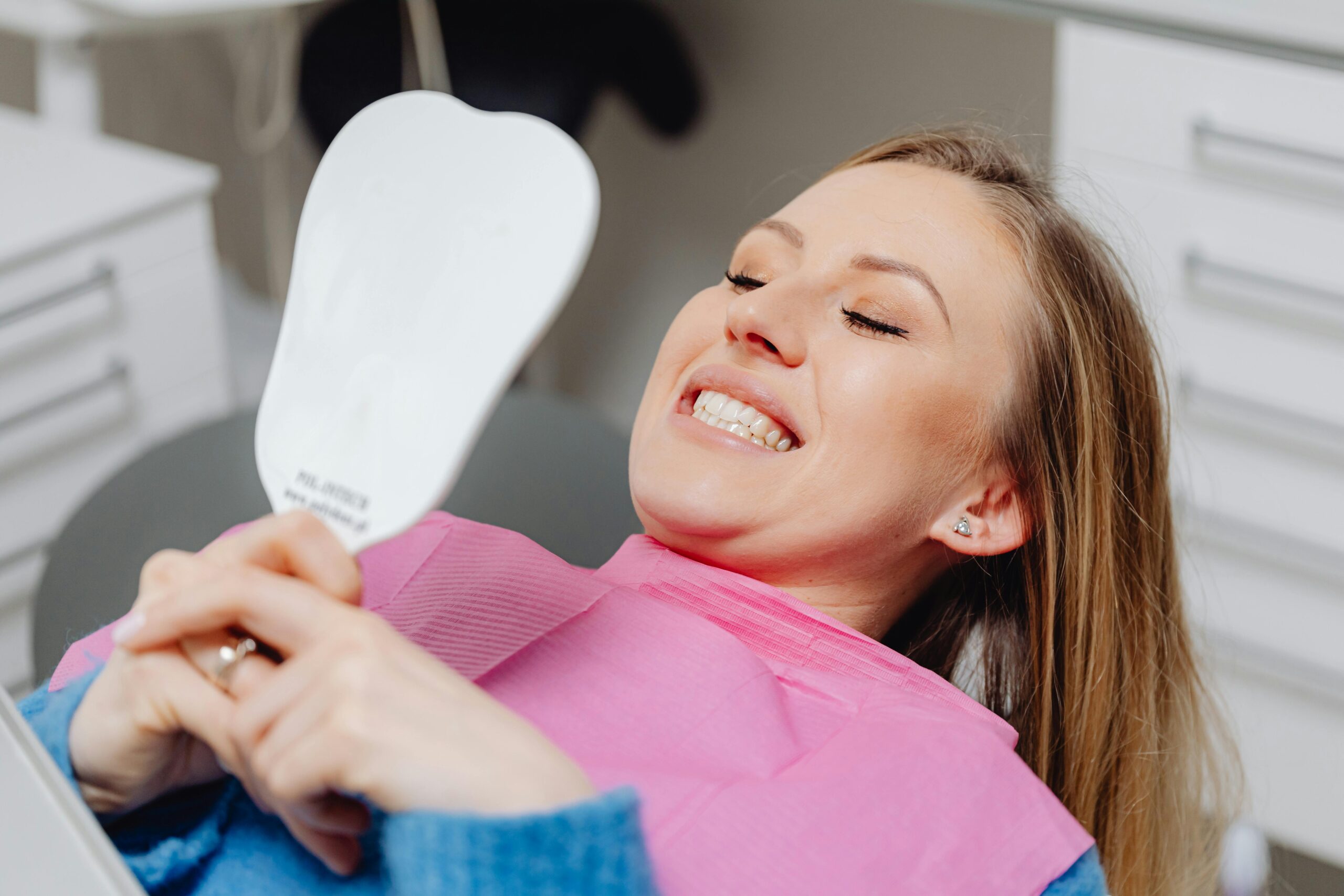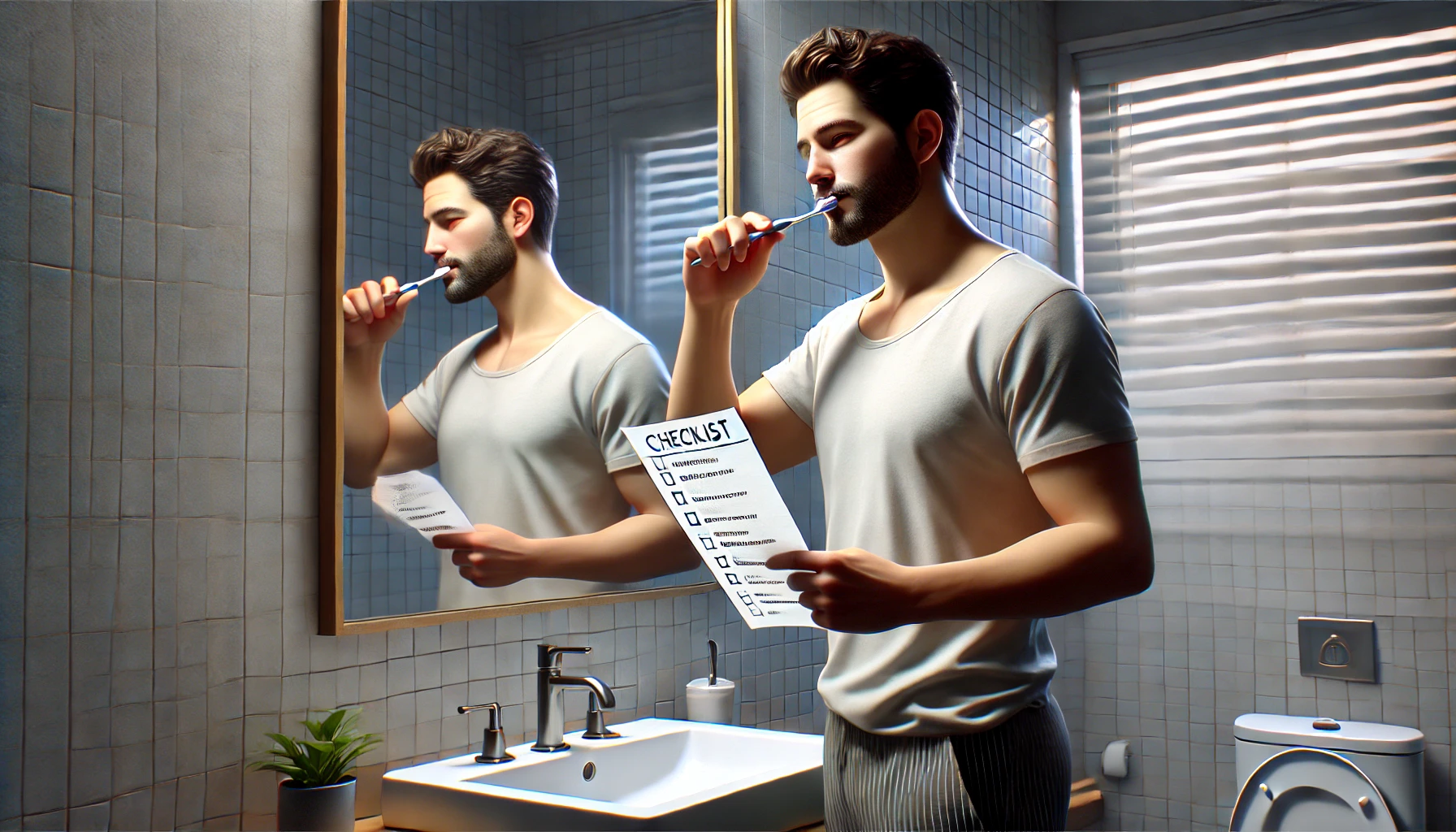
Achieving a bright, white smile can significantly enhance your confidence, but maintaining those pearly whites does require some care and attention.
Top Mistakes To Avoid After Whitening Your Teeth
This article delves into what teeth whitening truly involves and points out common pitfalls to avoid after your whitening treatment. It covers essential tips related to dietary choices and oral hygiene practices that can help you maximise and prolong your results. By exploring these insights, you’ll discover the best strategies to keep your smile shining and learn about the various whitening methods available today.
What is Teeth Whitening?
Teeth whitening has become a widely sought-after cosmetic dental procedure designed to enhance the brightness of your smile by addressing tooth discolouration. Over time, substances like coffee, tea, red wine, and tobacco can cause staining, prompting many individuals to seek effective whitening treatments.
There are professional whitening options available, as well as various home remedies for those aiming to achieve a brighter smile. However, it is essential to understand the different methods and their potential impacts on dental health, as improper techniques can result in enamel sensitivity or other side effects.
What are the Common Mistakes to Avoid After Whitening Your Teeth?
After investing time and money into tooth whitening, it is crucial to avoid common mistakes that may diminish your results.
Many people tend to underestimate the significance of post-whitening care, which can compromise the effectiveness of the whitening procedure and even pose risks to dental health.
Steering clear of certain staining foods and adhering to proper oral hygiene practices are vital for maintaining that bright smile.
Furthermore, being mindful of products that could cause gum irritation or enamel sensitivity can significantly contribute to achieving lasting results and boosting your confidence in your smile.
1. Consuming Staining Foods and Drinks
One of the most significant mistakes to avoid after whitening your teeth is indulging in staining foods and beverages that can quickly diminish your results. Items such as coffee, tea, and red wine are well-known for their ability to cause discolouration due to their deep pigments.
Additionally, a high sugar intake and acidic foods can harm your enamel, potentially leading to long-term dental health issues. By making more informed dietary choices, you can protect your newly whitened smile and extend the effects of your whitening treatments.
Plus steering clear of these culprits, it is advisable to limit fizzy drinks and certain fruits, like berries and pomegranates. While these fruits are nutritious, they can also stain enamel. To facilitate this transition, consider hydration to be your ally; drinking water can help wash away residue from meals.
Regular brushing with a gentle fluoride toothpaste will further support the maintenance of that brilliant appearance. Rinsing your mouth after consuming staining substances can also help minimise their effects.
Ultimately, these straightforward yet effective strategies not only enhance the longevity of your whitening results but also contribute to strong enamel and optimal oral health.
2. Not Following Post-Whitening Instructions
Not following the post-whitening instructions provided by your dentist can greatly impact the longevity of your results. These guidelines are crucial for ensuring that your teeth remain bright and healthy after whitening treatments.
Disregarding these recommendations may expose your teeth to unnecessary risks, such as enamel sensitivity and gum irritation, which can lead to discomfort and diminish your confidence in your smile. It is essential to adhere to this professional dental advice and follow the dos and don’ts of whitening to maintain your smile enhancement.
By following these guidelines, you can effectively manage any potential tooth sensitivity while maximising the benefits of the whitening procedure. Common recommendations typically include avoiding extremely hot or cold beverages for a specified period and steering clear of foods and drinks that may cause staining, such as coffee, red wine, or berries, as these can compromise the whitening effect.
Maintaining overall dental hygiene through regular brushing and flossing is also crucial, as it helps preserve the brightness of your smile and promotes a healthier mouth. This careful approach not only ensures the longevity of your whitening results but also contributes to a better overall oral health experience.
3. Using Harsh Toothpaste or Mouthwash

After whitening your teeth, it is important to avoid using harsh toothpaste or mouthwash, as these can cause discomfort and diminish your results. Many standard oral care products contain abrasive ingredients that may irritate sensitive gums and weaken your enamel.
This irritation can not only impact your immediate comfort but also increase the risk of long-term dental issues, such as heightened sensitivity and even decay. For individuals who have recently undergone whitening treatments, using products formulated with gentle, enamel-safe ingredients can make a significant difference.
Dental professionals often recommend fluoride toothpaste or options that feature natural soothing components, such as aloe vera, to provide relief without compromising the whitening effects.
By being mindful of ingredient labels and opting for gentler alternatives, you can enhance your overall oral hygiene while ensuring that your bright smile lasts longer.
4. Smoking or Using Tobacco Products
Continuing to smoke or use tobacco products after undergoing teeth whitening can significantly reverse the results of your treatment. It is well-known that tobacco contributes to considerable teeth discolouration and can lead to serious oral health issues over time.
Whether through traditional cigarettes or other forms, the chemicals present in tobacco stain teeth and compromise the integrity of enamel. To maintain your newly bright smile, it is advisable to consider lifestyle changes that promote better oral health practices and minimise the risk of staining.
In simpler terms, the harmful effects of smoking extend far beyond mere aesthetics; users often face heightened risks of oral diseases, including gum disease and even tooth loss.
While quitting smoking can be a difficult endeavour, numerous resources, such as support groups and nicotine replacement therapies, are available to provide assistance. Embracing a smoke-free lifestyle can lead to significant improvements in oral health and overall well-being, helping you to preserve that radiant whiteness.
The long-term advantages of adopting a healthier lifestyle not only enhance your smile but also contribute to your general health, paving the way for vibrant teeth and gums, free from the negative consequences associated with tobacco use.
5. Not Maintaining Proper Oral Hygiene
Failing to maintain proper oral hygiene after teeth whitening can result in rapid staining and decay, effectively undoing your whitening efforts. Engaging in regular brushing, flossing, and using mouthwash is essential for a successful oral care routine that helps sustain a bright smile.
Adopting effective brushing techniques and maintaining a consistent regimen can significantly enhance your teeth’ appearance and overall dental health. It is important to remember that good dental hygiene serves as the foundation for preserving your bright smile over the long term.
Utilising gentle circular motions while brushing and ensuring you reach all surfaces can make a noticeable difference. Additionally, daily flossing is crucial, as it removes food particles and plaque from between teeth that a toothbrush might not effectively reach.
Incorporating an alcohol-free mouthwash can also be beneficial, as it helps neutralise acids and provides an extra layer of protection.
By diligently following these dental health tips, individuals can strengthen their oral care routine and enjoy the lasting benefits of their whitening treatment, ensuring that their radiant smile remains picture-perfect.
6. Overusing Whitening Products
Overusing whitening products can lead to negative consequences such as enamel damage and increased sensitivity, which may offset the benefits of your whitening treatment. While the desire for a brilliantly white smile might be strong, it’s important to remember that moderation is crucial for maintaining both your dental health and the longevity of the results.
Proper whitening maintenance should ideally involve guidance from dental professionals, who can help you determine the most effective products and schedule for touch-up treatments.
The risks associated with excessive use can include gum irritation, which can make eating or speaking uncomfortable. Users may also notice heightened sensitivity in their teeth, particularly when consuming hot or cold beverages. This is a vital consideration for anyone thinking about starting a whitening regimen.
It is essential to adhere to the recommended guidelines found in whitening FAQs and to schedule regular dental check-ups to ensure the ongoing health of your teeth. A dental professional can evaluate the condition of your enamel and suggest appropriate alternatives, enabling you to achieve the brightness you desire while protecting your oral health.
7. Not Getting Touch-Up Treatments
Neglecting touch-up treatments can significantly reduce the longevity of your whitening results, particularly if you frequently consume foods or drinks that cause staining. Regular touch-up treatments are essential for maintaining a bright smile and ensuring that your investment in dental aesthetics is safeguarded.
Dentists typically recommend a schedule for these treatments, which may encompass both professional whitening sessions and at-home options tailored to your specific dental needs.
These treatments play a vital role in preserving your radiant appearance, as they effectively counteract the natural dulling that occurs from everyday activities. Generally, it is advised to have a professional touch-up every six months, while at-home kits can be utilised in between sessions to help maintain brightness.
There are various options available, including in-office procedures that deliver immediate results and customised take-home trays designed to meet individual requirements. These touch-ups not only refresh the colour of your teeth but also contribute to overall dental health by promoting regular care and professional guidance, making them an essential aspect of any whitening regimen.
How Long Does Teeth Whitening Last?

The duration of teeth whitening results can vary significantly based on several factors, including the method employed, individual oral hygiene practices, and dietary choices. Typically, professional whitening treatments yield longer-lasting effects compared to at-home kits or natural whiteners.
By maintaining proper oral care routines and avoiding foods that stain, one can extend the longevity of a bright smile and minimise teeth discolouration over time.
Professional treatments often utilise stronger bleaching agents that penetrate deeper into the enamel, providing results that may last anywhere from six months to two years, depending on one’s personal habits. Conversely, at-home whitening methods usually produce results that may fade within a few weeks, as they tend to use lower concentration formulas.
To enhance the longevity of whitening results, it is essential to adhere to a rigorous oral care regimen that includes:
- Daily brushing with a whitening toothpaste
- Regular flossing
- Routine dental visits
Additionally, being mindful of the consumption of common stain-causing foods and beverages, such as coffee, red wine, and berries, can significantly aid in maintaining that pearly white appearance, ensuring a more confident smile for any occasion.
What are the Benefits of Teeth Whitening?
Teeth whitening provides numerous benefits that go beyond just improving appearance; it plays a significant role in enhancing dental aesthetics and boosting confidence in one’s smile.
A brighter smile can positively impact both personal and professional interactions, fostering a sense of self-care and overall well-being.
Additionally, by addressing issues of teeth discolouration, individuals often find themselves more inclined to share their smiles, enriching their social experiences.
What are the Different Types of Teeth Whitening Methods?
There are various teeth whitening methods available, each offering a distinct approach and level of effectiveness that suits different preferences and budgets.
Individuals can choose from professional whitening treatments provided by dentists, at-home kits, and even natural whiteners, giving them a wide range of options for achieving their desired brightness.
By understanding these methods, one can make an informed decision about the best technique to meet their needs while ensuring optimal results.
1. In-Office Whitening
In-office whitening represents a professional treatment option that delivers immediate and dramatic results, typically completed in a single dental visit. During this procedure, dentists utilise specialised whitening gels and advanced techniques to lighten teeth effectively and safely, often achieving several shades brighter in just one session.
This method is particularly suited for individuals seeking significant improvements in a short timeframe, accompanied by professional guidance and dental check-ups to ensure optimal oral health.
The in-office whitening process begins with a thorough dental examination to evaluate the patient’s oral health and determine their suitability for the treatment. Once the patient is approved, the dental professional carefully applies a protective barrier on the gums to minimise any potential sensitivity.
After this initial step, a high-concentration whitening gel is applied directly to the teeth, which may be activated with a special light source to enhance the whitening effect. This dual approach not only accelerates results but also allows the dental expert to monitor the treatment closely, ensuring both safety and effectiveness.
Following the procedure, patients receive detailed instructions for maintaining their whitening results and education on how to prolong their bright smiles at home, making this treatment a valuable investment in their long-term dental aesthetics. Learn more about teeth whitening costs here.
2. At-Home Whitening
At-home whitening provides a convenient and accessible option for achieving a brighter smile, utilising a variety of whitening kits and products. These options typically include whitening strips, gels, or trays that can easily fit into your daily dental care routine.
While it is true that at-home methods may take longer to deliver results compared to in-office treatments, they can be quite effective for maintaining brightness and accommodating individual preferences.
For example, whitening strips are thin, flexible plastic strips coated with a peroxide-based whitening gel. These are applied directly to the teeth for a specified duration.
On the other hand, gels are often found in trays that offer a custom fit, ensuring maximum coverage and allowing for deeper penetration into enamel stains. While these at-home products can effectively lighten teeth by several shades, they may not provide the immediate results that professional whitening services from dentists can achieve.
To enhance the effectiveness of these at-home treatments, it is essential to follow the manufacturer’s instructions closely and establish a consistent oral health routine. Regular brushing, flossing, and dental check-ups should not be neglected, as they not only help maintain the results of whitening treatments but also support overall oral health.
3. Natural Whitening Remedies
Natural whitening remedies are becoming increasingly popular as safe alternatives for brightening smiles without the harsh chemicals commonly found in many commercial products. Ingredients such as bicarbonate of soda, activated charcoal, and hydrogen peroxide are frequently used in DIY home remedies to help reduce stains and enhance the appearance of teeth.
By incorporating these natural options into your beauty routines, you can adopt a gentler approach to teeth whitening while also promoting overall dental health.
These remedies can be customised to meet individual preferences, allowing for a more personalised approach to oral care. For example, bicarbonate of soda not only brightens teeth but also assists in plaque removal, making its regular use beneficial for maintaining oral hygiene.
Activated charcoal is effective in absorbing toxins; however, it should be used with caution due to its abrasive nature, which can potentially harm tooth enamel.
It is essential to consult with a dental professional before trying these methods to ensure they are suitable for your specific dental condition. Finding the right balance is crucial, as overusing even natural ingredients can lead to unintended consequences. This highlights the importance of making informed choices when it comes to teeth care.
How to Maintain White Teeth

Maintaining white teeth involves a consistent commitment to oral hygiene practices and thoughtful dietary choices that contribute to the longevity of your whitening results.
Regular brushing and flossing, using appropriate dental products, and scheduling dental check-ups are all essential elements of an effective teeth care routine.
Furthermore, avoiding staining foods and beverages can greatly impact how long your bright smile lasts, allowing you to fully enjoy the benefits of your whitening efforts.
1. Avoid Staining Foods and Drinks
To maintain white teeth, it is important to avoid foods and beverages known to cause stains, such as coffee, tea, and red wine. By making thoughtful dietary choices and staying well-hydrated, individuals can protect their enamel and preserve a bright smile.
Additionally, reducing sugar intake can help prevent plaque build-up and minimise the risk of oral bacteria that contribute to discolouration.
Incorporating crunchy fruits and vegetables, such as apples and carrots, into your diet can naturally aid in cleansing your teeth while also providing essential vitamins. However, it is crucial to be mindful of citrus fruits, as their high acidity can erode enamel over time.
Drinking plenty of water throughout the day not only keeps you hydrated but also helps in rinsing away food particles and sugars that may lead to staining.
As part of a comprehensive oral care routine, regular brushing, flossing, and using mouthwash can further protect against discolouration, ensuring that you maintain a radiant smile.
2. Follow Proper Oral Hygiene Practices
Adhering to proper oral hygiene practices is essential for maintaining white teeth and preventing discolouration. This involves effective brushing techniques, regular flossing, and using mouthwash to reduce plaque and the presence of oral bacteria. Establishing a consistent oral care routine not only enhances the appearance of your teeth but also contributes significantly to overall dental health and hygiene.
To optimise this routine, it is important to use a fluoride toothpaste, as it strengthens enamel and helps prevent cavities. Brushing at least twice a day—preferably in the morning and before bedtime—should be done carefully to cover all surfaces of each tooth, ideally for two minutes.
Daily flossing is also critical, as it removes food particles and plaque from between the teeth where toothbrush bristles cannot reach, thereby reducing the risk of gum disease.
Incorporating a mouthwash can provide an additional layer of protection by freshening breath and killing bacteria. It is advisable to choose products that carry the British Dental Association seal, as this indicates their effectiveness and safety.
3. Get Regular Dental Cleanings
Scheduling regular dental check-ups is essential for maintaining a bright smile and ensuring optimal oral health. Professional cleanings can effectively remove deposits and stains that regular brushing might overlook, contributing to a healthier and more vibrant appearance.
Additionally, dental check-ups provide valuable insights into how well your oral care routine is working, allowing for professional guidance on how to maintain your whitening results.
These routine visits are also crucial in preventing more serious dental issues down the line, such as cavities and gum disease, which can adversely affect your overall oral health.
By sticking to a schedule of dental cleanings, individuals can enjoy not only the aesthetic benefits of a radiant smile but also promote healthier gums and teeth, setting the stage for a lifetime of good dental health.
A dentist can provide personalised advice tailored to your specific needs, ensuring that you remain on track with home care practices that enhance your smile while also preventing discolouration.
4. Use Touch-Up Treatments as Needed
Utilising touch-up treatments as needed can assist in maintaining the brightness of your white teeth and countering any discolouration that may develop over time. Whether through professional whitening sessions or at-home kits, these treatments allow you to keep your smile vibrant between dental visits.
It is important to understand your options for whitening maintenance and to seek professional guidance in order to select the best approach for your individual needs.
Regular touch-up treatments are crucial for preserving the brightness achieved through initial bleaching, as various factors such as diet, oral hygiene, and lifestyle choices can affect tooth colour. Typically, these treatments can be performed every few months, depending on personal habits.
Professional options often involve in-office procedures that provide immediate results, while at-home solutions, such as whitening strips or custom trays, offer a level of convenience and flexibility.
By incorporating whitening products into daily dental care routines and scheduling periodic dental check-ups, individuals can effectively manage tooth discolouration, ensuring that their smiles remain radiant and healthy over extended periods.
Frequently Asked Questions
What are the top mistakes to avoid after whitening your teeth?
The top mistakes to avoid after whitening your teeth include consuming stain-causing foods and drinks, smoking, drinking dark-coloured beverages, not following post-whitening instructions, using whitening products too frequently, and not maintaining proper oral hygiene.
Can I eat or drink immediately after whitening my teeth?
No, it is recommended to wait at least one hour after whitening your teeth before consuming any food or drinks. This allows the whitening product to fully set and prevents any potential staining.
Is it safe to use whitening products too frequently?
No, using whitening products too frequently can cause damage to your teeth and gums. It is recommended to follow the instructions and only use whitening products as directed.
What happens if I don’t follow the post-whitening instructions?
If you don’t follow the post-whitening instructions, you may not achieve the desired results and could potentially cause damage to your teeth. It is important to follow the instructions provided by your dentist or the product manufacturer.
Should I continue my regular oral hygiene routine after whitening my teeth?
Yes, it is important to maintain proper oral hygiene even after whitening your teeth. This includes brushing twice a day, flossing daily, and visiting your dentist regularly for check-ups and cleanings.
How long will the results of teeth whitening last?
The longevity of teeth whitening results varies for each individual. However, typically results last for 6 months to 2 years. Maintaining good oral hygiene and avoiding stain-causing habits can help prolong the results.





